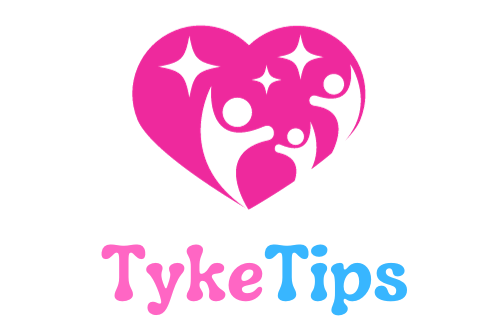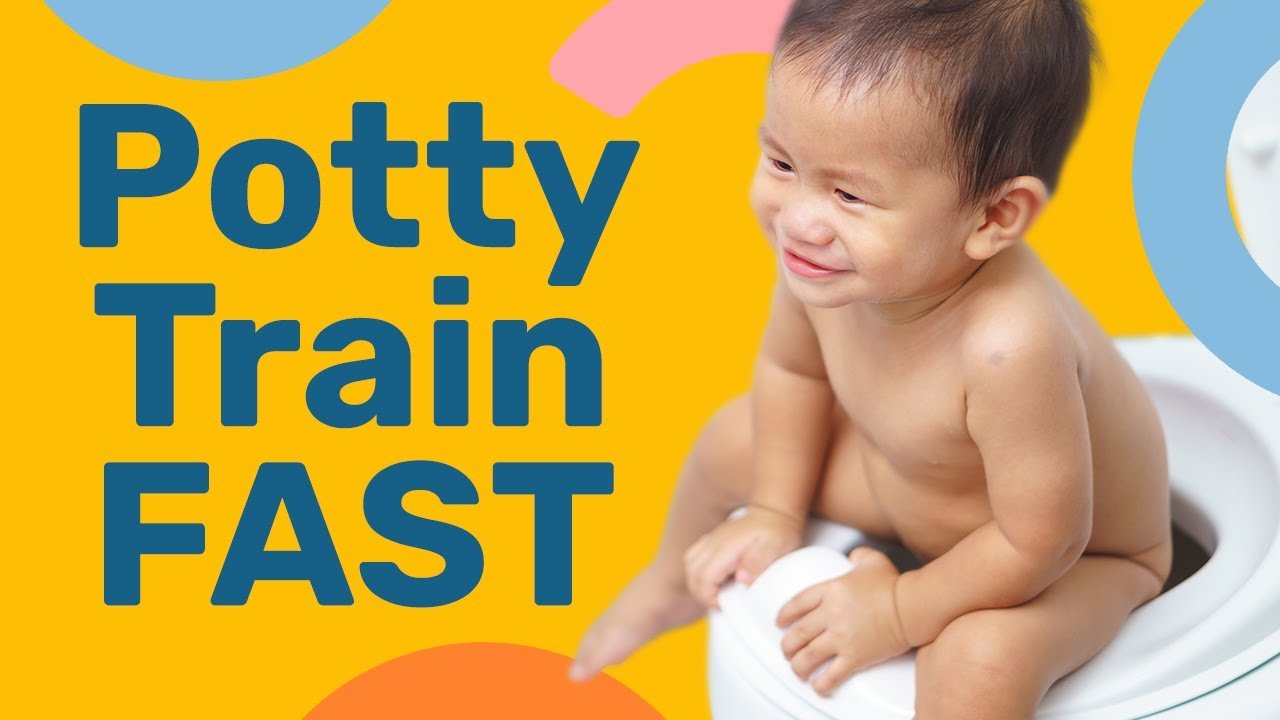Potty Training In Days, Not Weeks (8 Essential Steps to Toilet Train Your Toddler Fast!) Potty training doesn’t have to take months or even weeks. Using these 8 steps, it’s very possible to potty train your toddler in a matter of days! If you’re thinking about toilet training your little one soon, or you’ve already started the process, there are a few things you need to know that will make it much easier and much faster. While it can be a stressful process, it really doesn’t have to be. If you know how to tell when your child is ready, and then follow some simple steps you can take the stress out of potty training and make it a much more enjoyable experience. In this video you’ll learn 8 steps to potty train your toddler quickly and easily.
We have all heard the stories of parents who have toilet trained their toddler in a matter of days. It seems too good to be true, but it is absolutely possible. I’ve toilet trained both of my kids in two to three days and I know lots of other parents who have done it too. So in this video, I’m going to share eight things to do to toilet train your little one fast. The very first and most important thing you need to know is that your child is ready for toilet training. If they are not ready, then toilet training can drag on for months or even years. So how do you know if your child is ready? Really, you’re looking for two things. Firstly, they should be able to stay dry for one to two hours at a time, which generally happens at around two years of age, and they want to be doing soft form poos. So we want to ensure that they are not constipated. If they’re constipated, you want to hold off toilet training until that has been addressed.

Determining Readiness for Potty Training
Potty training is a significant milestone in your child’s development, and determining if they are ready for it is crucial. There are several signs of readiness that you can observe to help you decide if your child is prepared for potty training.
One indication of readiness is when your child can stay dry for one to two hours at a time. This typically happens around the age of two. If your child can keep their diaper or underwear dry for an extended period, it shows that they have better bladder control, making them more ready for potty training.
Another sign to look for is if your child is doing soft form poos. Constipation can hinder successful potty training, so it’s important to ensure that your child is not struggling with this issue before starting the process.
Understanding your child’s physical readiness is important, as it sets the foundation for successful potty training. Once you have determined that your child is physically ready, it’s time to move on to the next step.
Swapping out Nappies for Underwear
To help increase awareness of wet, dry, and dirty, it’s recommended to switch from nappies to underwear or training pants. Regular nappies are highly absorbent, making it difficult for your child to distinguish between being wet or dry. By using underwear or training pants, your child will be able to feel the difference between wet and dry, which is crucial for successful potty training.
Training pants, specifically, have an extra layer of absorbent material sewn into the crotch. This layer helps soak up small accidents or dribbles on the way to the toilet while still keeping your child feeling wet. The goal is to help them recognize when they are wet or soiled, motivating them to use the toilet.
If you’re not ready to completely eliminate nappies, you can have your child wear underwear inside the nappies. This method allows them to feel the difference between wet, dry, and clean, increasing their overall discomfort when they do have an accident. It also gives them a sense of control and independence as they learn to pull their undies on and off while using the toilet.
Establishing a Toilet Routine
Setting a fixed toilet routine can greatly aid in the potty training process. By having designated toilet times, you create a structured schedule that helps your child develop a routine and understand when it’s time to use the toilet.
Instead of asking your child if they want to go to the toilet, state that it’s toilet time. By doing so, you remove the option for them to say no, making it a non-negotiable part of their routine. For example, you can say, “Sarah, you’re jumping on the spot. Your body is saying it needs to go to the toilet. It’s toilet time.” This approach increases their awareness of their body’s signals and removes any potential resistance.
Creating a visual schedule can also be beneficial in establishing a toilet routine. You can use pictures or drawings to illustrate the steps involved in using the toilet, such as pulling down underwear, sitting on the toilet, and washing hands. This visual aid helps your child understand what to expect during each toilet time and can be a helpful reminder.
Managing Time on the Toilet
When your child is on the toilet, it’s important to set time limits to prevent it from being seen as a form of punishment. Sitting on the toilet for an extended period can cause your child to perceive it negatively and resist using it.
A maximum of five minutes is usually sufficient for your child to do a wee. Limiting the time spent on the toilet helps your child understand that going to the toilet is not an activity that requires lengthy periods of sitting. It also ensures that they associate going to the toilet with the act of using it, rather than using it as a place for leisure activities, such as playing with devices.
Creating a comfortable environment is crucial during toilet time. Ensure that the bathroom is clean, well-lit, and inviting. Using a child-sized toilet seat or a step stool can also make your child more comfortable and secure while sitting on the toilet. Having a supportive and encouraging demeanor can reassure your child and make them feel at ease.
If your child is having difficulty staying still or focusing while on the toilet, you can provide distractions such as books, toys, or engaging in conversation to make the experience more enjoyable. However, be mindful not to make the distractions the primary focus, as the goal is for your child to understand and associate using the toilet with the act itself.
Addressing Fear of Pooping in the Toilet
Fear of pooping in the toilet is a common hurdle during potty training. To help your child overcome this fear, a gradual approach is recommended.
Start by allowing your child to poop in the bathroom. Instead of hiding behind the couch or going into their bedroom, encourage them to use the bathroom for this purpose. When they finish pooping in their nappy, take the nappy off and flush the poo down the toilet while explaining that poos belong in the toilet. This helps your child become comfortable with the idea of pooping in the bathroom.
Once your child is comfortable with pooping in the bathroom, you can gradually transition them to the toilet. Initially, have them sit on the toilet while wearing a nappy. This step brings them closer to using the toilet and helps them become accustomed to the sitting position. As they become more comfortable, you can cut a hole in the nappy, allowing the poo to fall into the toilet while still providing them with a sense of security. Over time, you can completely remove the nappy as they grow more confident in using the toilet.
It’s important to be patient throughout this process and not force your child to do something they’re not ready for. Every child is different, and they will overcome their fear of pooping in the toilet at their own pace.
Handling Accidents
Accidents are a normal part of the potty training process, and how you respond to them can significantly impact your child’s progress. Remaining calm and patient is key when accidents happen.
Yelling, screaming, or expressing disappointment following an accident can create a negative association with using the toilet. Instead, reassure your child that accidents are okay and part of the learning process. Offer comfort and support while calmly explaining what happened and the appropriate steps to take.
Teaching your child appropriate clean-up steps is essential in their potty training journey. Show them how to clean themselves and the area where the accident occurred. This helps them take responsibility for their actions and encourages independence.
When changing clothes after an accident, it’s best to do so in the bathroom. This reinforces the association between accidents and the toilet. Encourage your child to assist in changing their clothes, emphasizing the importance of cleanliness and hygiene.
Ensuring Comfort and Relaxation on the Toilet
It is crucial for your child to feel comfortable and relaxed while sitting on the toilet. Proper positioning, with knees above hips, contributes to successful bowel movements.
Understanding the science behind proper positioning is essential. When the knees are higher than the hips, it straightens the rectum, facilitating easier bowel movements. To achieve this, you can use a child-sized toilet seat or a step stool to provide the necessary elevation.
Additionally, providing support and encouragement during toilet time helps your child feel at ease. Reassure them that using the toilet is a normal and important part of growing up. Celebrate their successes and offer praise when they successfully use the toilet.
Importance of Knees Above Hips
Understanding the importance of knees being higher than hips is crucial for successful bowel movements. The alignment of the rectum is crucial for easy and comfortable elimination.
Choosing appropriate seating options can help achieve the desired position. Child-sized toilet seats or step stools can provide the necessary elevation to ensure the knees are above the hips. This alignment straightens the rectum, making it easier for your child to have a bowel movement.
By creating an environment that facilitates proper positioning, you set your child up for success in their potty training journey.
Essential Items for Easier Potty Training
During the potty training process, there are two essential items that can make the journey easier for both you and your child.
A child-sized toilet seat provides a comfortable and secure seating option for your child. It is designed specifically for their size, ensuring proper positioning. Using a child-sized toilet seat can make your child feel more confident and at ease while using the toilet.
A step stool is another essential item that helps your child achieve the necessary knee elevation for successful bowel movements. It provides the extra height needed for their feet to comfortably rest, ensuring the knees are higher than the hips.
These two items work together to create a comfortable and supportive environment for your child during potty training.
Further Resources
To learn more about how to effectively help your child feel comfortable using the toilet, consider watching the provided video by Emma Hubbard. This video offers valuable tips and advice on potty training your toddler quickly and easily.
Remember, every child is unique, and the potty training process may vary for each one. It’s essential to be patient, supportive, and understanding throughout this journey. With the right approach and a positive attitude, you can help your child successfully transition from nappies to using the toilet independently.

